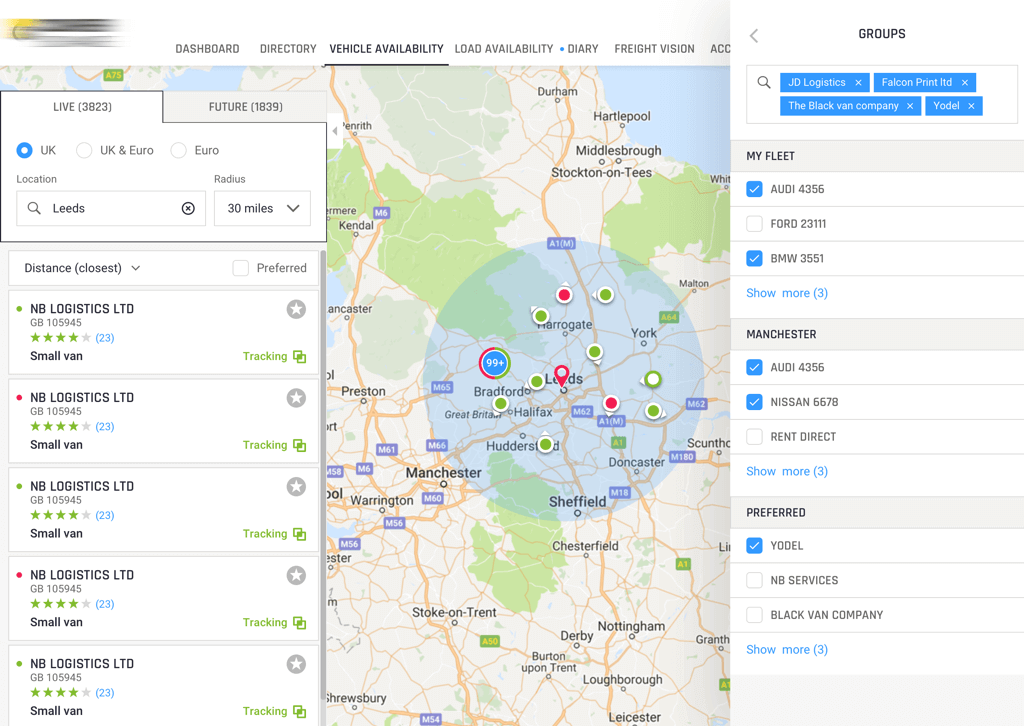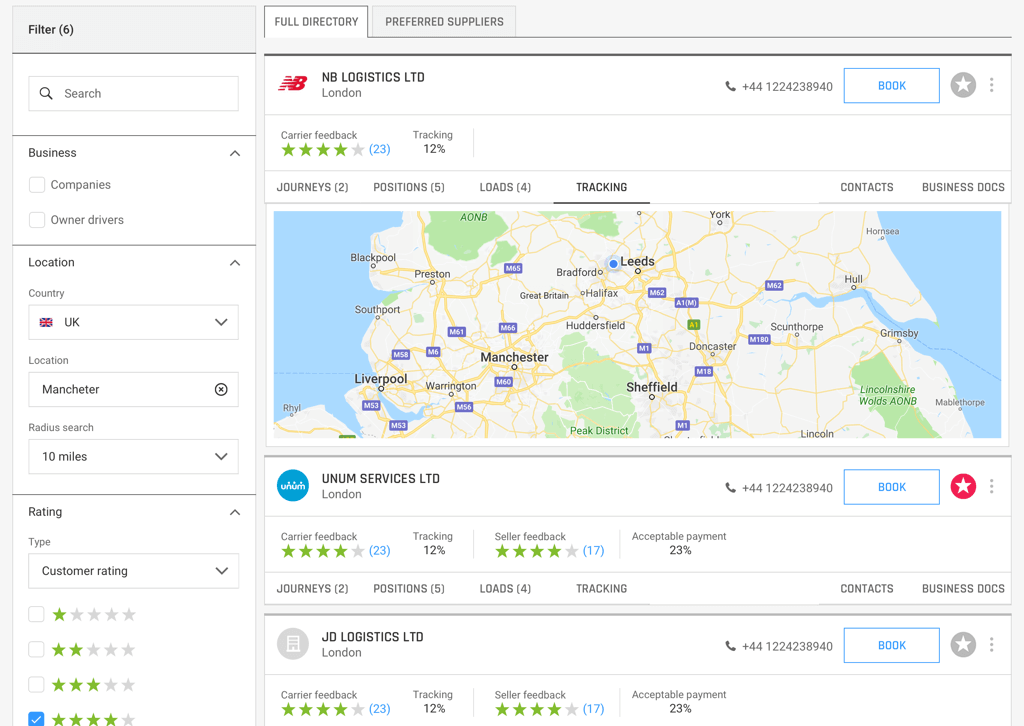How to Build Shipment Tracking Software for Your Business
Have you ever used a location-tracking app? If YES, you may be aware of GPS applications. Is there an app for everything in this almost automated, data-driven world? Need a prescription? There is an application for this. Need to check the weather before heading out? There is an app for this too. I'm having trouble scheduling monthly payments and need help. There is an app for this too.
The right data at the right time gives you access to real technology solutions through these applications. So it's no surprise that there's an app for locating people, places, and things worldwide! Enter location-based apps, also known as GPS apps. This guide compromises how to create shipment tracking software from process to examples.
Example of Creating Shipment Tracking Software [Case Study]
We have been developing such applications since the founding of Ardas. We have been working on one of these applications since 2007. This case is about shipment tracking software serving the entire flow, from posting the load to its final delivery, helping transportation companies and individuals to do their work easily.

This courier SaaS product was created in the early 2000s, and after successfully passing the post-MVP phase and getting good traction, they had to grow an IT department which was difficult and expensive in the UK. We met them at the beginning of active growth, all their software required refactoring and modernization. We developed a transformation plan and run a small pilot project to show how we can help and solve the problems they had. That was the beginning of long and profitable cooperation.
We started with a dedicated team of 6 IT engineers in 2007, and today, it is a large IT department that consists of 34 engineers, including front and back-end development, database and big data engineering, data science, server infrastructure management, QA, task management, and business analysis. The whole team works closely with a core business team in the UK, showing an example of an effective and long-term collaboration between business and offshore development teams.
The biggest challenge was made in 2007-2008 when the first team of four developers, one QA, and one business analyst had to refactor the system and make it ready for much higher performance, increase stability, and simultaneously guarantee 99% uptime to satisfy existing users. By the end of 2008, we doubled the team and brought all experts into the development process covering all aspects and levels of this SaaS platform, such as CI/CD, automated testing, scrum, etc. That was a big push and a turning point in the life cycle of this system.
Today, we are proud to be a part of the highly technical and successful SaaS solution. Building long-lasting relations is never easy. We have been accurate with all the details through the years. Even today, we are striving to improve our integration in the business, optimizing our costs and processes. And yes, we would be glad to share our expertise in setting up long-lasting relations for any other SaaS tool that is about to take over the world.
When Does Your Business Need Shipment Tracking Software?
The popularity of delivery has skyrocketed since the onset of the pandemic and the lockdown, people have appreciated the opportunity to get everything they need from the comfort of their homes. But their wishes didn't stop there. Same-day delivery, delivery within a few hours, free delivery – consumer demands are rising. And to meet them, companies need to optimize their approach to delivery as much as possible.
For large companies with huge supply chains, automation will become the tool that will help to take all the information into account, use resources more rationally and become many times more productive.
For small companies of local importance with an already established delivery process, such a tool will become an indispensable assistant, minimizing the number of errors and taking it to a new level.
For those who are just planning to make delivery one of their services, delivery management automation will become a tireless employee and faithful companion. It will open up a lot of new opportunities for you and help you establish processes even with a minimum number of employees in the state.
A delivery management system can help your business at every step because the possibilities of such a tool are vast. Let's see what automation can offer you at various stages and levels:
-
Order fulfillment: now that all your orders are collected in one place, it is easy for you to manage and keep track of them. Information about customers, their location, and all the necessary data are also in a single integral system so that it will be much easier for all staff to navigate and take much less time to process orders.
-
Shipment planning: automatic distribution of orders and goods, optimization of delivery and route, and the ability to calculate the arrival time at the endpoint. Both the driver and the client can receive notifications with all the necessary information.
-
Delivery: First of all, navigation, convenient route building for the driver, and real-time delivery tracking for the client. In addition, in case of traffic jams or other unforeseen delays, the estimated arrival time can be adjusted in real-time.
-
Service: Delivery notifications and map tracking greatly improve customer satisfaction. Digital proof of delivery will help you track the performance of drivers, and instant customer feedback will bring you even closer to your target audience.
-
Analytics: thermal delivery zone, performance, order statistics, and other data will always be at hand and help track the performance of your system.
-
Integration: programs for delivery services are easily integrated with other company services to create a single system for recording all the necessary information.
Shipment Tracking Software Must-Have Features
When developing a custom application, you can implement any functionality you see fit. However, ideally, the following features should be considered.
Real-Time Shipment Tracking
Is the driver on his way to his next delivery, or is he accidentally heading in the opposite direction? Are they stuck in traffic? Real-time visibility of vehicle locations can help controllers understand when a driver is likely to veer off course, saving precious resources and avoiding costly delays. Customer support teams also use vehicle tracking to inform customers when their delivery will likely be completed. Use the data to give your customers a great experience while waiting for their delivery.
Payments
An online payment system for any product or service received by customers, which can be utilized in tracking and shipping applications with various payment methods.
Order Management
A delivery tracking app should make managing all your orders from one platform easy. Get complete control and insight into all of your orders from all your sales channels at every step of the shipping process.
Save time by automatically applying actions to orders based on your defined criteria. Synchronize as many orders as you want from any number of sources you use by connecting a sales channel, manually creating orders, uploading CSVs, or entering data via shipping API integration.

Tracking History
Detailed location, time, and status information that you can refer to in case of a problem.
Estimated Time of Arrival (ETA)
ETAs, or Estimated Arrival Time, is critical for ensuring customer satisfaction. The feature estimates this time and displays when the driver will arrive at the pickup and drop-off location. The map features display the estimated arrival time and allow you to plan your activities accordingly. Providing the consumer with an ETA is extremely useful and vital.
Generate Shipping Documents
Automates creating and sending invoices, adding attachments and notes, and setting up user invoices.
Communications With Customers
In an ideal world, your drivers and dispatchers might never need to communicate via text or voice. Dispatchers set tasks, and drivers carry them out. However, in the real world, it is absolutely necessary to facilitate communication between team members. If a driver has trouble finding a drop-off location or contacting a customer, they often contact the dispatcher for advice first. This guide is one of the key components of delivery management. With real-time chat, these communications are not only simplified but enhanced by the added context of the driver's location and the details of their active delivery.
Label Printing
For its part, the driver must also be prepared, so it is better to consider printing a new label if the goods are damaged on the road, or something goes wrong.
Items Scanning
For the same reason, the driver should have a scanner in case, so that the driver can simply scan the product and get complete information about it.
Shipping Notification
Courier tracking software allows the customer to see the status of orders and the driver’s location and share the tracking Link. Additionally, they can communicate directly with the driver via the communication module. Sending a Track link is the best method for consumers who do not have the Customer Application installed. In this case, you can send the link to them by SMS to follow the order process as it unfolds.
Shipment Tracking Software Technologies & Architecture
Let’s get back to our case study, where we shared how we developed courier management software. The main driver app, including its regional versions, allows users to receive tasks, track their progress, send messages, etc. It is available on iOS and Android, originally developed natively, and has been redeveloped on Flutter.
The application for the SaaS allows managing the loads from managers' and dispatchers' points of view. It also includes a live availability map showing real-time fleet capacity and an instant messenger with specific B2B features.
The fleet and load-tracking features were implemented for couriers and customers. The platform tracks all vehicles and loads and visualizes them on the map using 15+ TMS providers or GPS in smartphones.
The map shows current loads with destinations and available transport with movement direction.
Delivery ETAs, delays, fleet and load statuses, and route history are displayed and updated on the fly.
All map visualization and geocoding were initially done with Google Maps and now changed to Here WeGo.
Courier companies can add their drivers and vehicles. A simplified UI was done for individual drivers with only one car. The courier manager can post jobs to subcontract a driver.
Fleet real-time management is done with a web or mobile app and telematics integration systems.
Couriers can filter loads by many parameters such as vehicle type, region/area, etc., expose their availability, look for the closest loads, apply for a job by sending a quote, and communicate with customers using an external communication tool.

Customer UI gives the possibility to post jobs (loads) describing them, get an immediate notification when a courier applies for a job, review all applicants, and approve or reject the suggested quote.
The real-time load management and vehicle routes are implemented and visualized on the map to see where your load is going and the status.
When a job is completed, a customer can rate and leave feedback for a driver.
We built the white label layer that allows other companies to resell this platform under their brand. allowing them to customize branding, logic, and behavior. Our big data back-end easily handles data coming from all partners.
We integrated with Zendesk for customer support, SendGrid to send emails, and CardBoardFish to send SMS to notify users.
Customer management, chats, and other support features are available for parent company and white-label firms.
The administration panel was developed as a separate web application to manage all system aspects of this SaaS. It allows control of courier companies and customers, loads, payments, and all other data flow.
It flexibly configures the system-level behavior and helps SaaS staff to resolve issues on a company/user level providing high-end support services.
All external APIs are configured here, allowing us to connect this platform to many ERP/CRMs or other logistics software used in the industry today.
More than 200 screens, forms, popups, pages are our responsibility. Our designers have been working on all the tiny details to ensure that the application precisely meets the customers' requirements and their daily duties.
Since 2012, when we took over the original design, we have been constantly improving the ergonomics of UI, making the user experience better and more optimized for the audience.
All the requirements of customers and our product owners are analyzed carefully and implemented precisely.
How Much Does It Cost To Build Shipment Tracking Software?
The cost of developing an API for a М with all the associated data services, functions and features that end users expect to have in a modern shipment tracking software will vary. The development of a geolocation application depends on the functionality that the user requires from the application's features. This means that if you prefer to build a geolocation app with minimal product variation, or a mobile app with less advanced maps and static APIs, then you should:
Paying your geolocation app development team at the bottom of the scale starts at about $28 per hour per person on the app development team.
Remember that if you give your user the bare minimum when starting a geolocation mobile app solution project, you may not get as high a return on your investment from users as you would if you integrated the app's geolocation features.
Investing in a knowledgeable and capable team of shipment-tracking software developers and project specialists ensures that you get a great return on your investment in building a functional mapping application with advanced APIs and an intuitive user interface. Building a well-built shipment tracking software like the popular shipment tracking software will require a budget to match the scale of this project.
At a higher level, developers and project managers will charge a starting rate of up to $75 per hour per person on the development team.
However, investing in a fully built-in maps API will pay off as your mobile shipment tracking software will get a higher return on your investment. With a qualified application development team, an acceptable budget, and a great mobile app concept for geolocation API, you can find your way into creating shipment tracking software!
Challenges Of Shipment Tracking Software Development
Despite the huge benefits that smart monitoring brings to supply chain participants, there are certain difficulties with its implementation.
Problems With Standardization
There are no common industry standards for smart container tracking. Accordingly, it is difficult to achieve international recognition of the technology. Standards are needed because they make it easier to implement monitoring software and integrate it with other programs.
The first official standard, Business Requirements Specification (BRS) for smart containers, was adopted by the United Nations Center for Trade Facilitation and Electronic Business (UN/CEFACT). The document defines the data elements required for Smart Container Solutions. It describes what a smart container is and what information interested parties can share. But this is only the first step, the work on standardization is in progress yet.
Security Threats
Some managers are afraid that the transmitted data can be hacked or replaced by fraudsters. The developer of container tracking systems addresses this issue. Experts think over reliable data protection (access control, encryption, and similar methods).
System Scalability
Containers are made from steel. In addition, they are placed in several rows to fit compactly on the deck. There is a risk that the connection between an IoT device and the manager will be interrupted, and the data will be lost or inaccurate. But this problem is solved by choosing the right communication network, which will improve the coverage area and ensure uninterrupted data transmission.
Resistance to Changes
The more accurately you want to track the product, the more technologically difficult it will be to set up changes in the system since precision-sensitive technologies are few and rarely subject to change. But with custom development, it is possible.
How Ardas Can Help You?
Shipment tracking software, if developed correctly, can become successful and add value to your business. To gain a competitive advantage, delivery automation must permeate the entire delivery management system. Once delivery companies reach a level of automation maturity, when they begin to see the return on their business strategies, they consider even more advanced delivery service automation methods.
Key takeaways:
- Customers expect to be able to track their orders in real-time right after purchase.
- Shipment tracking software is designed for e-commerce and trucking businesses to keep their customers updated on the status and location of their orders.
- A custom order tracking system can be very helpful when your business is faced with scenarios such as long manufacturing times and frequent requests for updates from customers
- You need to analyze the specifics, capabilities, and requirements of your business to create a tracking application as efficiently as possible
- When developing shipment tracking software, you first need to consider the target audience. Understanding your users’ needs makes development easier and leads to a better final product.
- Find a development team you want to work with. The first phase of development will include business analysis, developing a technical specification, estimating the development cost, and planning the project.
- We recommend launching a minimum viable product first and testing its technical and business performance.
- Developing shipment tracking software with a company based in Eastern Europe is cost-effective and gives you access to top talent.
If you want to create shipment tracking software or any other logistics software development services but don’t know where to start, contact Ardas for a free consultation. Our managers will be happy to answer all your questions and help you choose the best solution that will solve the problems and tasks of your business.
